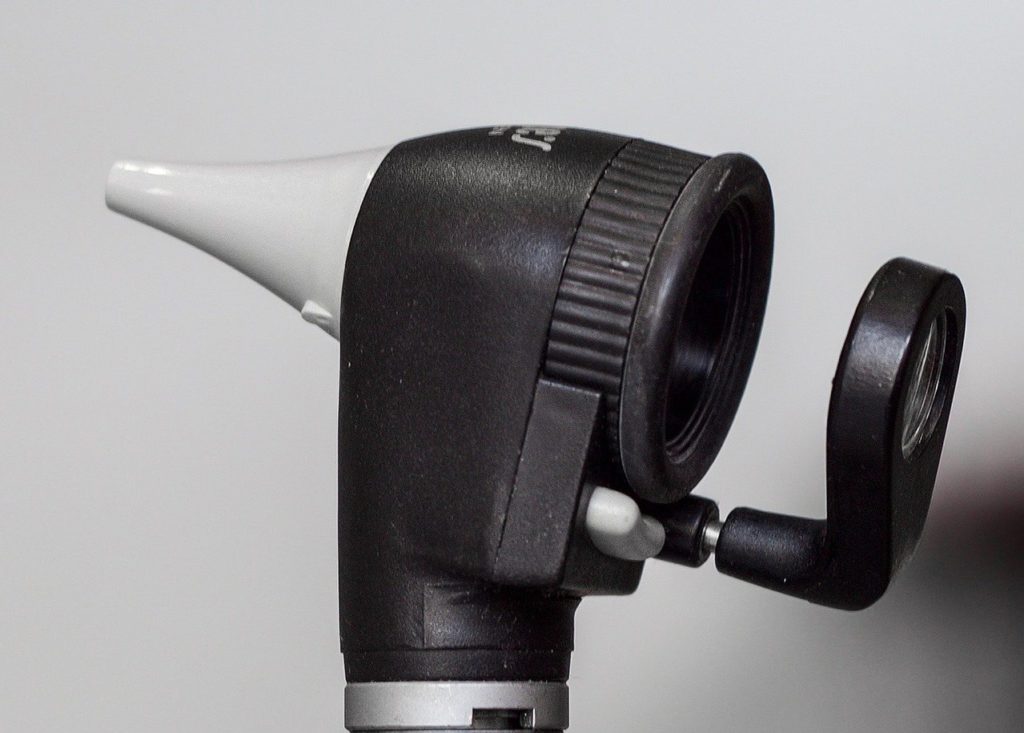Take yourself back to one of those times as a kid with ear pain going to see the doctor. Then the doctor had to look into your ear using a special device, well that device was probably an otoscope. Modern otoscopes have a handle connected to a low powered magnifying lens with a light attached. These devices allow doctors to see different angles of the inner ear, and can also be used to look into the nose and throat.
While the modern otoscope seems simple enough, there have been many iterations of this device over the years.
1363
One of the first references to our modern day otoscope comes from Guy de Chaliac in the mid-1300s. This French physician and surgeon described and sketched the device that would later become known as the otoscope.
1646
Willhelm Fabricius Hilandus is known as the Father of German Surgery. He was among the first to use tourniquets to control bleeding and is known for improving amputation techniques. In addition, he created one of the first prototypes of the otoscope. This initial prototype for an ear speculum resembled tongs, rather than a modern otoscope.
1772
J.J. Perret also created one of the initial prototypes of the otoscope in France in the late 1700s. As a medical device salesman in Paris, he included these devices in his catalog of medical instruments.
1836
William Kramer, who was a German doctor specializing in otology, created a more refined version of the otoscope. This version came with a funnel that expanded as the two handles were pulled apart. This otoscope was famously named the Kramer’s speculum.
1838
One of the first otoscopes, made of metal, came from an Austrian doctor by the name of Ignaz Gruber. This iteration more closely resembled modern otoscopes, in that it only had one handle and was a funnel-shaped speculum.
1864
The first pneumatic otoscope was developed by E. Seigle in Germany. This type of otoscope uses air pressure. This allows doctors to observe how a patient’s tympanic membrane reacts to air pressure. This membrane should move in response to pressure, but being able to tell that it is immobile can help doctors understand an underlying problem. Such otoscopes are still used today, probably more often in a specialty ear nose and throat (ENT) doctor’s office.
1881
Hartmann specula used today was first developed by A. Hartmann in 1881 in Berlin, Germany. This device has a funnel speculum that can be removed, and the otoscope contains a lens much like those used in doctor’s offices today.
The otoscope has changed and developed with various iterations to become what is known as today. Similarly, our world of technology continues to advance in multiple areas. Our businesses, schools, and hospitals would be very different than they are today without the advancement of technology. It is amazing how far we’ve come, and there’s still more advancement happening every day.
Despite all of the advancement that the otoscope has gone through, there are still advancements being made. For example, it may be possible for a parent to look into their child’s inner ear using only their smartphone. A Forbes article discusses the startup CellScope that is working to make this possible. The company created an attachment for a smartphone that is able to record a video of a child’s eardrum. This video can be sent off to an on-call doctor through their app to have them help determine if there’s a problem. This idea can be very helpful for children who often get ear infections or have to get ear tubes. Technology, such as that provided by CellScope, could allow families to monitor their kids’ ear health from the comfort of home.
The otoscope itself has become a crucial tool for many doctors throughout the world. Its history does not simply point to one person. Rather, it has been a collaborative effort over many generations to continue working towards the best possible technology. We, as humans, can certainly do and create great things when we are able to work together towards a common good. The future of the otoscope, and of medical technology, is certainly a bright one.





